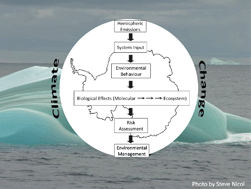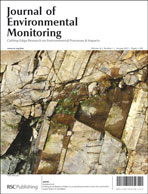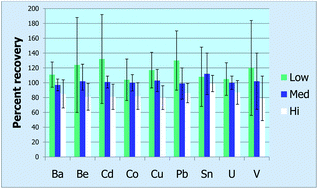 Wunmi Sadik is Professor of Chemistry & Director, Center for Advanced Sensors & Environmental Systems, at State University of New York at Binghamton (SUNY-Binghamton). Her research areas include interfacial molecular recognition processes, sensors, and new measurement approaches and their application to solving problems in biological systems, energy and the environment. Professor Sadik was the Guest Editor for our Environmental Nanotechnology themed issue in 2011.
Wunmi Sadik is Professor of Chemistry & Director, Center for Advanced Sensors & Environmental Systems, at State University of New York at Binghamton (SUNY-Binghamton). Her research areas include interfacial molecular recognition processes, sensors, and new measurement approaches and their application to solving problems in biological systems, energy and the environment. Professor Sadik was the Guest Editor for our Environmental Nanotechnology themed issue in 2011.
Her expertise covers the “Emerging Contaminants and Nanotechnology” area of our scope and you may also be interested in some of her recent articles:
Sensors as tools for quantitation, nanotoxicity and nanomonitoring assessment of engineered nanomaterials
O. A. Sadik, A. L. Zhou, S. Kikandi, N. Du, Q. Wang and K. Varner
DOI: 10.1039/B912860C
Foreword: JEM Spotlight: Environmental monitoring of airborne nanoparticles
Omowunmi (Wunmi) A. Sadik
DOI: 10.1039/B917248N
Environmental nanotechnology
Wunmi Sadik
Editorial From themed issue Environmental Nanotechnology
And her thoughts on the future of environmental nanotechnology? “The last decade has witnessed an explosion of interest in the science and technology of engineered nanomaterials. Research and development in the next decade will focus on the overall sustainability of nanotechnology including the need to develop standardized nanomaterials, characterization parameters, metrological tools and protocols for a better understanding of the interactions of nanomaterials with biological and environmental systems.”
View the profiles for the rest of the Editorial Board here.











 Professor
Professor  Professor Liang-Hong Guo is a principal investigator and group leader at the Center for Eco-environmental Sciences, Chinese Academy of Sciences. His current research interests include biosensors and bioassays for quantitative determination of environmental chemicals and chemical toxicity testing, interactions of environmental chemicals with biological molecules and their toxicological implications, and nanomaterials for water purification.
Professor Liang-Hong Guo is a principal investigator and group leader at the Center for Eco-environmental Sciences, Chinese Academy of Sciences. His current research interests include biosensors and bioassays for quantitative determination of environmental chemicals and chemical toxicity testing, interactions of environmental chemicals with biological molecules and their toxicological implications, and nanomaterials for water purification. Professor
Professor  The release of engineered nanomaterials to the environment
The release of engineered nanomaterials to the environment Persistent organic pollutants in Antarctica: current and future research priorities
Persistent organic pollutants in Antarctica: current and future research priorities 

 In 2012 we welcome a new Chair to our Editorial Board, Frank Wania, University of Toronto and thank Professor Deborah Swackhamer for all her work as previous Chair.
In 2012 we welcome a new Chair to our Editorial Board, Frank Wania, University of Toronto and thank Professor Deborah Swackhamer for all her work as previous Chair. 